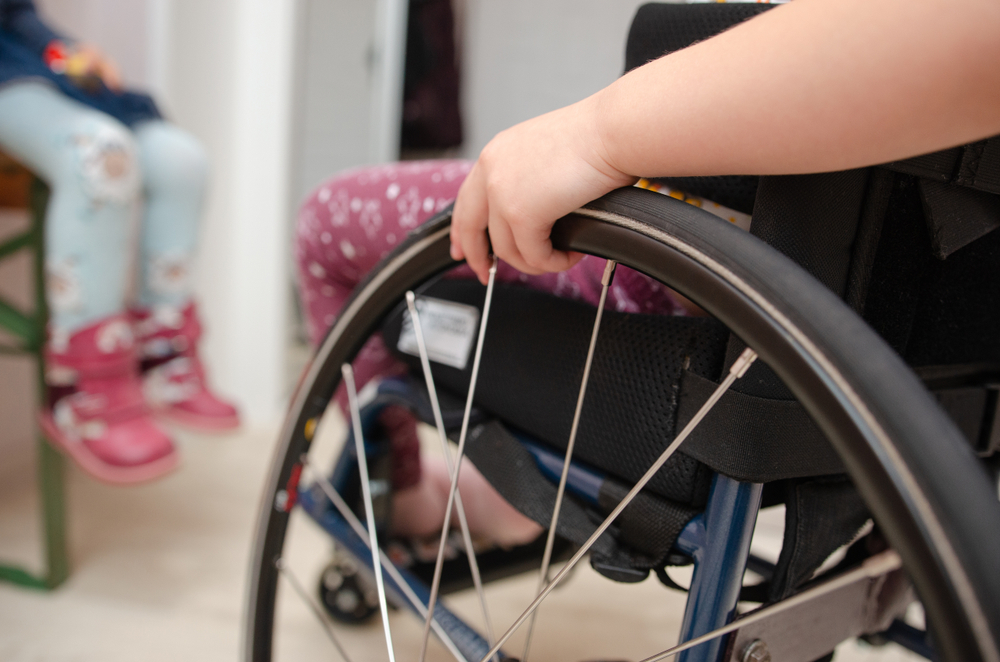Defining Birth Injuries
Birth injuries refer to the physical harm or trauma that an infant may sustain during the labor and delivery process. These injuries can range from mild, such as minor bruising, to severe, potentially leading to long-term disabilities.
- Types of Birth Injuries: Common injuries include brachial plexus injuries, fractures, and nerve damage. More severe cases may result in conditions like injuries at birth or hypoxic-ischemic encephalopathy.
- Causes: Factors contributing to birth injuries can involve prolonged labor, the baby’s position during delivery, or medical negligence.
- Treatment: Rehabilitation through occupational therapy is often crucial for recovery, focusing on improving the child’s functional abilities.
- Legal Aspects: In cases where medical negligence is suspected, families may explore the possibility of suing for birth injury, navigating through the complex birth injury lawsuit process.
The Scope of Occupational Therapy
Occupational therapy (OT) is a broad field that encompasses a variety of techniques and approaches designed to improve an individual’s ability to perform daily activities. In the context of birth injuries, OT plays a crucial role in helping infants and children overcome developmental delays and physical challenges that may arise from their injuries.
The scope of occupational therapy includes, but is not limited to:
- Enhancing fine motor skills and hand-eye coordination
- Promoting sensory processing and integration
- Facilitating cognitive development and problem-solving abilities
- Supporting emotional and social well-being
Occupational therapists work in diverse settings, including hospitals, clinics, schools, and private practices. They collaborate with a multidisciplinary team to provide comprehensive care tailored to each child’s unique needs. The ultimate goal of OT is to empower individuals with the skills necessary for independent living and to improve their overall quality of life.
Connecting Birth Injuries and Occupational Therapy
Occupational therapy plays a pivotal role in the rehabilitation process for infants who have sustained birth injuries. These injuries can range from mild to severe and may include conditions such as cerebral palsy or nerve damage. The prognosis for these conditions can be significantly improved with early intervention, which is where occupational therapy comes in.
The primary goal of occupational therapy in this context is to enhance the infant’s ability to participate in daily activities and to promote optimal development. This is achieved through a variety of strategies:
- Early assessment to determine the specific needs of the child.
- Customized intervention plans that focus on improving functional abilities.
- Family education to ensure that care and support extend beyond the clinical setting.
By addressing the unique challenges posed by birth injuries, occupational therapists can help pave the way for positive outcomes. They work closely with families to provide the necessary tools and strategies to support the child’s growth and development.
Assessment and Planning in Occupational Therapy
Initial Evaluation of the Infant
The initial evaluation of an infant who has sustained a birth injury is a critical step in the occupational therapy process. This comprehensive assessment serves as the foundation for all subsequent rehabilitation efforts. Occupational therapists begin by observing the infant’s current functional abilities, including motor skills, sensory processing, and interaction with the environment.
Key components of the initial evaluation may include:
- A review of the child’s medical history and birth injury specifics.
- An assessment of the infant’s developmental milestones and current level of function.
- Observation of the child’s behavior and responses to various stimuli.
- Discussions with parents or caregivers to understand the child’s daily routines and any concerns they may have.
The information gathered during this phase is instrumental in identifying the infant’s strengths and challenges. It allows the occupational therapist to tailor a rehabilitation plan that addresses the unique needs of the child, setting the stage for effective intervention strategies.
Setting Rehabilitation Goals
In the journey of birth injury rehabilitation, setting clear and achievable goals is a pivotal step. These objectives guide the therapeutic process and provide a roadmap for the child’s recovery. Occupational therapists collaborate with a multidisciplinary team, including physicians, physical therapists, and speech therapists, to establish goals that are tailored to the infant’s unique needs.
The goals in occupational therapy are typically categorized into short-term and long-term aspirations:
- Short-term goals focus on immediate improvements and are often stepping stones toward larger achievements. They may include enhancing muscle tone, improving feeding abilities, or increasing tolerance to sensory stimuli.
- Long-term goals are set with the vision of enabling the child to reach their maximum potential. These may encompass mastering fine motor skills, achieving developmental milestones, and ultimately, participating in age-appropriate activities.
Throughout the process, goals are regularly reviewed and revised to align with the child’s progress and any new challenges that may arise. This dynamic approach ensures that the therapy remains relevant and effective, fostering the best possible outcomes for the child.
Creating Individualized Treatment Plans
Once the initial evaluation is complete and rehabilitation goals are set, occupational therapists begin the meticulous process of creating individualized treatment plans. These plans are tailored to the unique needs of each infant, considering the specific nature and extent of the birth injury, as well as the child’s current developmental stage.
Key components of an individualized treatment plan may include:
- Specific therapeutic exercises and activities
- Recommendations for adaptive equipment
- Strategies for daily living skills development
- Coordination with other healthcare professionals
The plan is designed to be flexible, allowing for adjustments as the child grows and achieves new milestones. Regular reassessment ensures that the therapy remains aligned with the child’s evolving needs. It’s important for families to understand that the road to recovery may be long, and seeking additional support, such as from ABC Law Centers, can be beneficial. They specialize in birth injury cases, offering legal support and financial relief to families in need.
Intervention Strategies for Birth Injury Rehabilitation
Neuromuscular Techniques
Occupational therapy utilizes various neuromuscular techniques to address the challenges faced by infants with birth injuries. These techniques are designed to improve muscle function, enhance motor control, and facilitate proper movement patterns.
- Neurodevelopmental Treatment (NDT): A cornerstone in pediatric occupational therapy, NDT focuses on guiding the child through normal developmental stages of movement.
- Constraint-Induced Movement Therapy (CIMT): Often used for children with unilateral injuries, such as those affecting the brachial plexus, CIMT encourages the use of the affected limb by restricting the unaffected one.
- Functional Electrical Stimulation (FES): FES applies small electrical pulses to weakened or paralyzed muscles to improve function and support motor learning.
In cases of Brachial Plexus Birth Injury, the occupational therapist may collaborate with medical professionals to determine the best course of action, which could include physical exams and, for severe cases, surgical options. Families should also be aware that in the event of a birth injury, legal avenues exist that may provide financial support for the necessary medical treatments and care.
Sensory Integration Approaches
Occupational therapy utilizes sensory integration approaches to address the unique challenges faced by infants with birth injuries. These techniques are designed to help children process and respond to sensory information in a way that fosters normal development and functional skills.
Key components of sensory integration therapy include:
- Tactile Stimulation: Encouraging the infant to touch and feel a variety of textures to improve tactile awareness and discrimination.
- Vestibular Input: Using movement, such as swinging or rocking, to help the child’s sense of balance and spatial orientation.
- Proprioceptive Feedback: Engaging in activities that provide pressure and resistance to muscles and joints, aiding in body awareness.
Therapists carefully tailor these activities to each child’s needs, ensuring that sensory experiences are both therapeutic and enjoyable. The goal is to integrate sensory input in a way that promotes optimal functioning and independence in daily activities. As infants progress, therapists continuously assess and adjust the sensory integration strategies to align with the child’s developmental milestones and therapeutic goals.
Cognitive and Perceptual Activities
Occupational therapy for birth injury rehabilitation often includes cognitive and perceptual activities designed to enhance an infant’s development. These activities are tailored to stimulate mental processes and improve the child’s ability to interpret and respond to their environment.
- Cognitive activities may involve simple problem-solving tasks, memory exercises, and games that encourage decision-making and reasoning skills.
- Perceptual activities focus on helping the child integrate sensory information, which can include exercises for visual tracking, distinguishing shapes and colors, and spatial awareness.
Therapists work closely with infants to monitor their responses to these activities, adjusting the complexity as the child grows and develops. The ultimate goal is to support the child in achieving optimal cognitive and perceptual function, which is critical for learning and interacting with the world around them.
Family Involvement and Education
Educating Parents and Caregivers
The rehabilitation process for infants with birth injuries is a collaborative effort that extends beyond the clinical setting. A critical component of this process is the education of parents and caregivers. They are often the primary providers of care and play a significant role in the child’s recovery and development.
Key educational topics include:
- Understanding the nature and implications of the birth injury
- Learning about the goals and expectations of occupational therapy
- Acquiring skills to support therapy at home
- Recognizing signs of progress or potential complications
Occupational therapists provide parents and caregivers with resources and training to ensure they are well-equipped to assist in their child’s rehabilitation journey. This includes demonstrating techniques that can be incorporated into daily routines, offering guidance on how to create a supportive home environment, and advising on the use of adaptive equipment if necessary. By empowering parents and caregivers with knowledge and skills, they become active participants in the therapy process, which can contribute to more positive outcomes for the child.
Incorporating Family in Therapy Sessions
The involvement of family members in occupational therapy sessions is a cornerstone of effective birth injury rehabilitation. It not only fosters a supportive environment for the infant but also empowers parents and caregivers with the knowledge and skills necessary to continue therapeutic practices at home.
Key strategies for incorporating family include:
- Education on the infant’s specific needs: Therapists provide detailed explanations of the birth injury and its implications, ensuring that family members understand the challenges and the reasons behind each therapeutic activity.
- Hands-on training: Family members receive direct instruction on how to assist with exercises and use adaptive equipment, which promotes consistency in the infant’s daily routine.
- Collaborative goal-setting: Therapists work closely with the family to set realistic and meaningful goals, making them active participants in the rehabilitation process.
- Emotional support and counseling: Recognizing the emotional toll of a birth injury, therapists offer guidance and support to help families cope with their child’s condition.
By integrating family into therapy sessions, occupational therapists create a comprehensive support system that extends beyond the clinical setting, contributing to a more holistic approach to the infant’s development and well-being.
Support Resources for Families
Navigating the journey of birth injury rehabilitation can be challenging for families, which is why access to robust support resources is crucial. Organizations like the March of Dimes offer comprehensive assistance, ranging from research and educational programs to advocacy efforts, all aimed at ensuring the best possible start for mothers and infants. Families are encouraged to join such organizations to both contribute to the support network and benefit from the available resources.
In addition to national organizations, local community groups often provide a more personalized touch, with support coming from individuals who have experienced similar challenges. These groups can be a source of emotional support, practical advice, and a sense of community. Furthermore, online forums and social media groups have emerged as vital platforms where families can connect, share experiences, and find solace in the collective wisdom of others who understand their journey.
Healthcare providers can also guide families to specific resources tailored to their needs, including specialized therapists, educational materials, and financial aid programs. It’s important for families to be proactive in seeking out these resources to ensure a comprehensive support system is in place throughout the rehabilitation process.
Measuring Outcomes and Adjusting Therapy
Evaluating Progress and Outcomes
In the realm of occupational therapy for birth injury rehabilitation, the evaluation of progress and outcomes is a critical component. This process involves a systematic review of the infant’s developmental milestones, functional abilities, and the effectiveness of the interventions applied. Therapists utilize a variety of assessment tools and methods to measure improvements and identify areas that require further attention.
Key indicators of progress may include:
- Enhanced motor skills and coordination
- Improved sensory processing and integration
- Increased participation in daily activities
- Positive changes in behavior and social interaction
The outcomes are not solely based on the infant’s performance but also on the satisfaction and feedback from the family. Adjustments to the therapy plan are made in response to the assessment findings, ensuring that the rehabilitation process remains dynamic and tailored to the child’s evolving needs. Regular monitoring and evaluation foster a proactive approach, allowing for timely interventions that can significantly impact the child’s long-term development and quality of life.
Adapting Therapy to Developmental Changes
As infants grow and develop, their needs and abilities change, necessitating adjustments in their occupational therapy programs. Therapists must remain vigilant, continuously assessing the child’s developmental milestones and adapting therapy accordingly. This dynamic approach ensures that the therapy remains relevant and effective throughout the child’s growth.
Key considerations for adapting therapy include:
- Monitoring the child’s physical, cognitive, and social development.
- Adjusting the difficulty and type of activities to match the child’s evolving skills.
- Incorporating new therapeutic goals as previous ones are achieved or as new challenges arise.
Collaboration with other healthcare professionals is also crucial during this process. It allows for a comprehensive understanding of the child’s progress and any additional interventions that may be required. Ultimately, the goal is to provide a seamless transition through each stage of development, ensuring that the child receives the most beneficial and supportive care possible.
Long-term Follow-up and Support
The journey of rehabilitation from birth injuries is often a long-term process that extends beyond the initial phases of recovery. Long-term follow-up is crucial to ensure that the child continues to progress and to address any emerging challenges as they grow and develop. Occupational therapists play a key role in this ongoing support, providing periodic assessments that gauge the child’s development in relation to their peers and the goals set during early intervention.
Key components of long-term follow-up include:
- Monitoring the child’s motor skills, cognitive development, and emotional well-being.
- Adjusting therapy techniques to align with the child’s changing needs as they age.
- Collaborating with educational professionals to facilitate a smooth transition into school environments.
Families also receive guidance on how to support their child’s development at home, ensuring that therapeutic practices are integrated into daily routines. This holistic approach not only aids in the child’s functional abilities but also promotes independence and self-confidence. Finally, support resources such as support groups, educational workshops, and referral to other professionals become invaluable as families navigate the complexities of raising a child affected by birth injuries.






